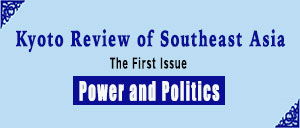
Politics and Ethnicity in Malaysia: Chinese Politics and National Integration
Mareshia no Seiji to Esunishiti—Kajin Seiji to Kokumin Togo
Kaneko Yoshiki
Kyoto / Koyoshobo / 2001
The author of this book, while studying in Malaysia, had first-hand experience of ethnic tensions sparked in October 1987 by the promotion of non-Mandarin-speaking teachers to senior positions in Chinese schools. It was then, he says, that he realized how Malaysia’s multi-ethnic society rested on a fragile ethnic harmony. His interest in Malaysian Chinese politics of the 1950s and 1960s, explored here through the prism of ethnicity and national integration in Peninsular Malaysia, originated from this personal experience.
This book is concerned with the period preceding the pro-Malay policy inaugurated in 1970 which classifies citizens into Bumiputra (literally, sons of the soil) and non-Bumiputra and differentiates the rights of each group. He treats the period of the 1950s-60s as governed by a multi-ethnic coalition which prioritized keeping a balance of power among the ethnic groups, a system that secured the supremacy of Malays in politics and culture and the Chinese in economics. The book attempts to explain how such a system was established in the 1950s and why it collapsed in the 1960s by focusing on the weak integration of the Chinese community.
Kaneko explains that the system was established in the 1950s in the process of “ethnic bargaining.” The Chinese-based political party MCA (Malayan/Malaysian Chinese Association) demanded that the Malay-based party UMNO (United Malays Nationals Organization) recognize citizenship based on jus soli and secure the economic interests achieved by Chinese elites. Accepting these demands, UMNO exacted from the MCA recognition of Malay supremacy in politics and culture and stipulation of Malay special rights in the Constitution (on which the Bumiputra policy was eventually based).
This system became unstable in the 1960s when people began to support newly established opposition parties. The author points out that this was an expression of dissatisfaction by the masses against the elites, and he analyzes the case of the Chinese community. He traces the “inevitable” divergence of elite and mass political views to cultural orientations that had been developing since the early twentieth century. Like other scholars, he divides the Chinese community into the “English stream group” and the “Chinese stream group.” The former were English-educated elites, well versed in English, who maintained a close relationship with first the colonial government and then the Malay leadership. Little attached to Chinese culture, they tended to value harmony among the ethnic groups, but they lacked support from the Chinese masses. The latter group were Chinese-educated; most could not speak English and their sphere of activity was limited to the Chinese community. However, as leaders of various Chinese organizations, they gained support from the Chinese masses.
The author classifies top MCA leaders as belonging to the “English stream group” and lower level MCA leaders and the masses as belonging to the “Chinese stream group.” The latter demanded equality among different ethnic groups, institutionalization of Chinese schools within the national education system, and recognition of Chinese as an official language. The English-educated leaders did not pay much attention, because they originally had little interest in these matters. Kaneko argues that when the dissatisfaction of the Chinese masses reached beyond the Chinese community and became directed against UMNO and Malays, it resulted in the ethnic tensions which led to the riots of 13 May 1969.
This is almost the first book written in Japanese that describes in detail Chinese politics in Peninsular Malaysia in the 1950s and 1960s. It is based on a wide range of materials as well as previous scholarship. It provides Japanese readers with a short cut to learn about the modern history of Malaysia and review the findings of previous studies without taking pains to read books written in foreign languages. In this sense, there is no doubt that the book makes a great contribution.
However, it is difficult to find a new perspective in Kaneko’s book. Heng Pek Koon’s Chinese Politics in Malaysia: A History of the Malaysian Chinese Association (Singapore, Oxford University Press, 1988), has already used the same approach. And the view they share—one that attributes ethnic conflict to cultural attachment—should itself be re-examined. This perspective can only assume a gloomy future for multi-ethnic countries and cannot propose effective prescriptions to settle ethnic conflicts. To avoid this hopeless scenario, another approach has been developed which attributes ethnic conflict to material interests. This view enables us to be conscious of the system of distributing material interests and to propose policy prescriptions for changing the system and distribution patterns. Shouldn’t we re-examine conventional interpretations of the Chinese in Malaysia and of ethnicity and national integration?
Shinozaki Kaori
The author is a Ph.D. candidate at Tokyo University’s Graduate School of Arts and Sciences.

